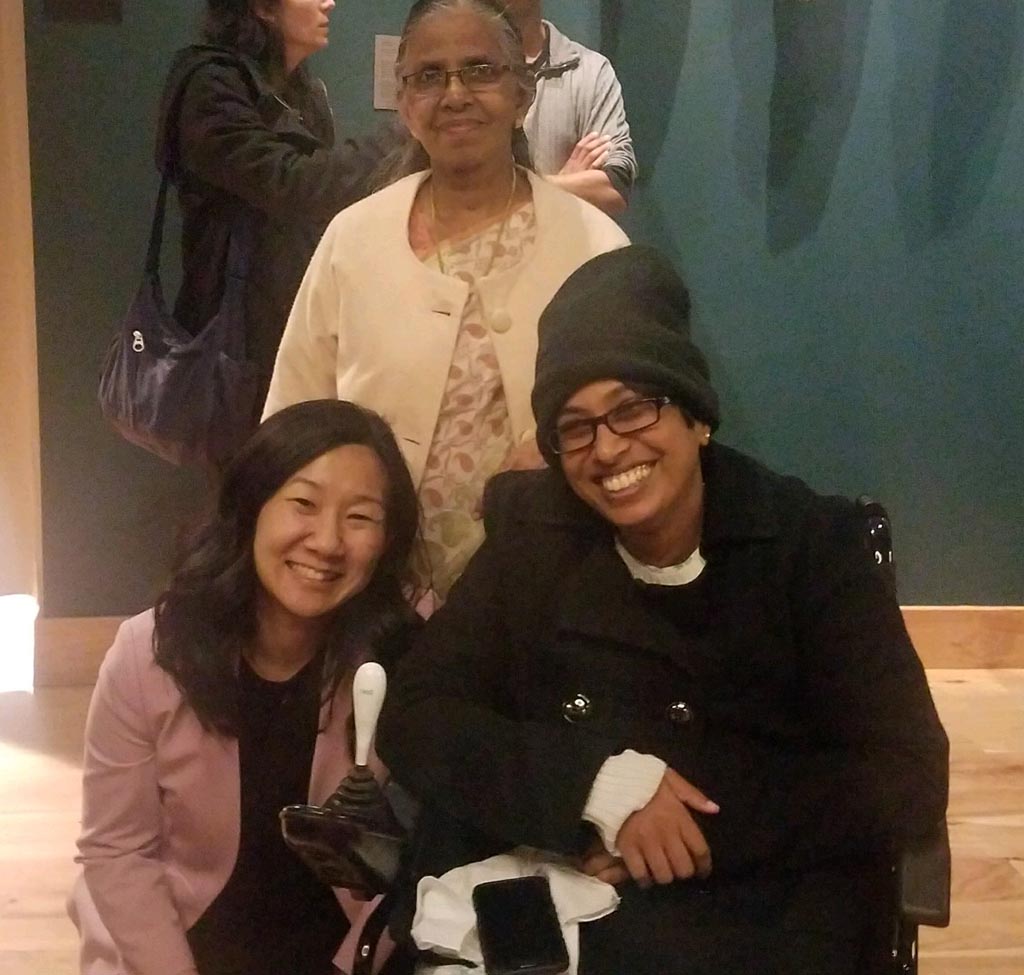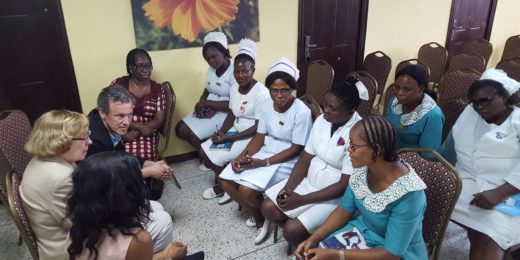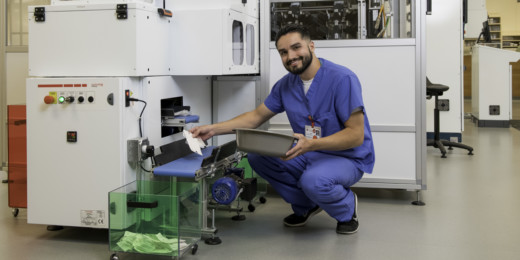After an accident several years ago in which she was thrown from a train near her home in India, Ashla Rani was paralyzed and confined to a wheelchair. Her injuries were so serious that she could have died, doctors said, and she suffered terrible pain. But access to services that could help her were limited.
Then Rani found her way to the Trivandrum Institute, a leading palliative care center in southern India, where she received pain medication and other medical and psychological support to help her heal and thrive.
Now, Rani, who was a technology professional at the time of her accident, is a counselor at the institute. It is one of 22 organizations in India that, for the past three years, have been part of a Stanford-led program to improve and expand palliative care services across the South Asian country.
Palliative care -- compassionate care designed to provide relief from the symptoms and physical and mental stress of a life-limiting illnesses -- is an emerging field in India. But the need for such care is expected to grow as the country's population ages and millions of people are afflicted with cancer and other serious conditions, said Karl Lorenz, MD, a professor of medicine and the section chief for palliative care at Stanford Medicine.
The Stanford program, spearheaded by Lorenz and some of his colleagues, is a major international collaboration in which they work with U.S. and Australian experts to provide remote coaching to caregivers at India's leading cancer and palliative care centers. The goal is to provide care to more people who desperately need it.
Lorenz said that less than 1% of the population in India has access to these critical services. As a result, many people with chronic illnesses or disabilities can't get treatment -- including for pain, which is so intolerable for some that they commit suicide, he said.
"Palliative care services are in very thin supply for one of the largest populations in the world," Lorenz told me. "The unaddressed suffering is enormous."

Through the program, based on a Stanford model of clinical excellence training, Lorenz and his collaborators share resource materials online and provide mentoring through phone calls and video conferences, often held at odd hours of the day and night to account for the time difference.
The results have been impressive. For instance, the program helped one major pediatric cancer group, called CanKids, reduce the time children waited to see a palliative care specialist from 60 days to just 15 days, said Jake Mickelsen, a health care consultant at Stanford Medicine who volunteers for the project.
Staff at the Gujarat Cancer and Research Center learned how to make better use of their limited resources and time to double the number of weekly home visits to patients, he said.
Similarly, the program helped the All India Institute of Medical Sciences in New Delhi shorten the time it took for oral cancer patients to be referred to palliative care from 50 to 14 days, said Sushma Bhatnagar, MD, who heads the institute.
"Patients reported better symptomatic relief and understanding of their disease and prognosis," Bhatnagar said. "Additionally, it resulted in increased awareness about palliative care among oncologists, surgeons and patients."
Many of participating groups now work independently and are training others, thus spreading their knowledge so that more patients can be served. The program also has led to the establishment of an in-country training hub in Mumbai that is supported by a grant from the nonprofit Tata Trusts.
Lorenz said he's proud that collaborators were able to train at so many sites, and they did it all with voluntary support and a dedicated cadre of people from all over the world. "The fact that there is now a team in Mumbai -- that has been trained, funded and established -- is mind-boggling to me," he said.
Stephanie Harman, MD, the clinical chief of palliative care at Stanford Health Care, said she benefited from working with her Indian colleagues. Some of them are skilled in areas that are lacking here, such as delivery of palliative care in a home setting, she told me.
"We learn a lot from places that we view as having disadvantages," said Harman, who was a project volunteer. "The processes they've developed, and their innovations around community-based care, are things we struggle with in the U.S. We have much hubris and much to learn. It was really eye-opening to me."
Top photo by cornfield. Middle photo courtesy of Stephanie Harman






